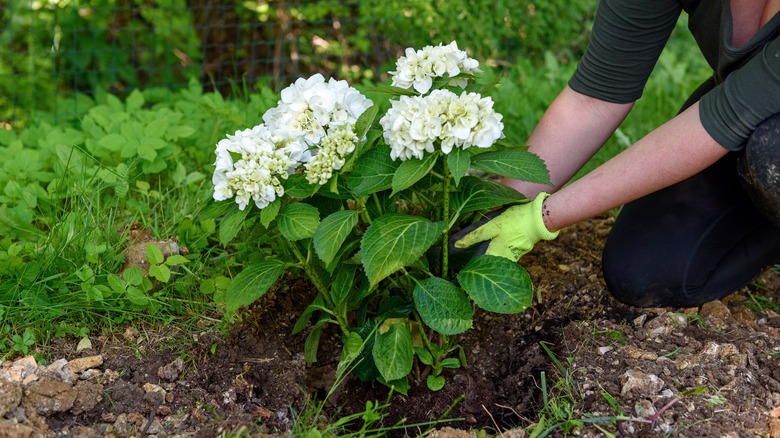Martha Stewart's Expert Tips Make Transplanting Hydrangea Plants Hassle-Free
Transplanting hydrangeas can be a delicate process, but with proper care and attention, you can make it hassle-free and increase the chances of maintaining a thriving plant. In an interview with Marlo Thomas, Martha Stewart recommends a heavy focus on the roots and how you dig out the hydrangea. "You'll have to prune it down quite low and dig it up quite large. Don't take away all the soil, really dig a nice well around the base, and you probably can then just move it into a prepared hole. Try not to lose too much of the soil around the roots," she advises (via Youtube).
Hydrangea plants are very susceptible to transplant shock which is why they need to be gently handled. For the new location, dig a wide and deep hole about twice the size of the plant's root ball. Then, carefully dig up the hydrangea in a way that retains as much of the root ball as possible to keep them from getting damaged. To reduce stress on the roots further, prune back some of the top growth if it's a large plant.
More expert tips for transplanting hydrangeas
When transplanting any plant, you need to choose the right time, location, and soil. The best time to transplant hydrangeas is during their dormant period, or in the fall or winter. This minimizes stress and gives them time to establish new roots before the growing season starts. The best location is the one that has the right amount of sunlight for your specific variety. Get quality, well-draining soil and incorporate compost or well-rotted manure into it before transplanting.
Hydrangeas require consistent moisture, especially during the transplanting process, so prepare them by keeping the roots hydrated before they have to move. After placing the plant in its new place, fill it with the soil, water it thoroughly, and apply some mulch at the base. Keeping it hydrated is important after transplanting. "Water it in and keep watering and feeding it 'til it gets re-established," says Martha Stewart (via Youtube). Finally, keep an eye on your transplanted hydrangea for signs of stress like wilting or browning leaves, but note that these symptoms should improve over time.
